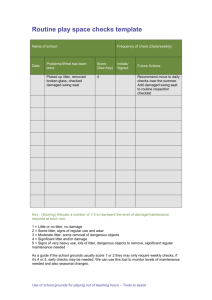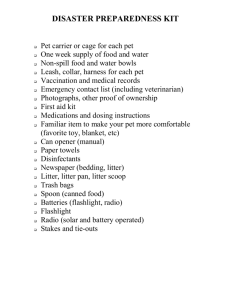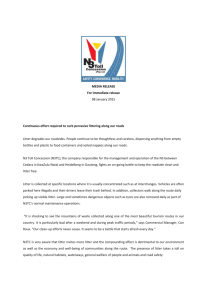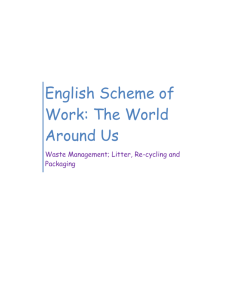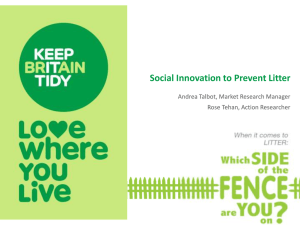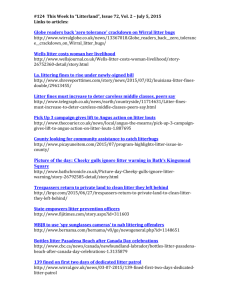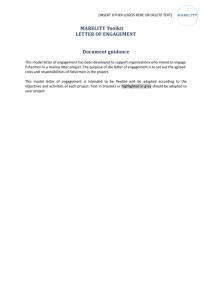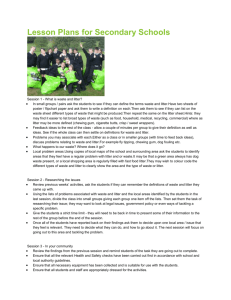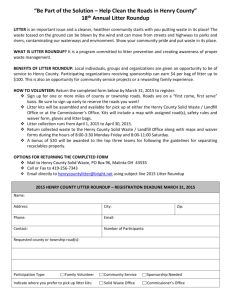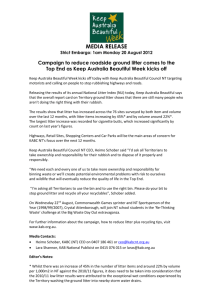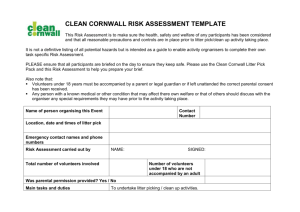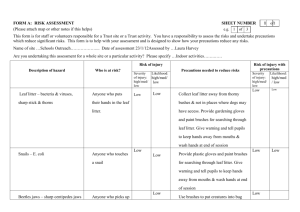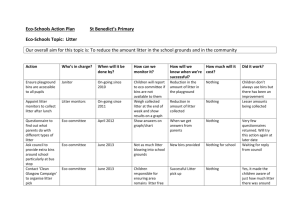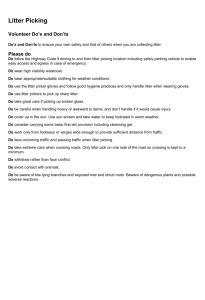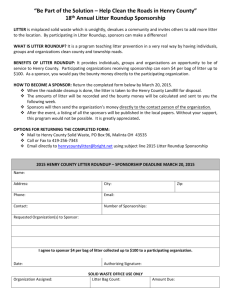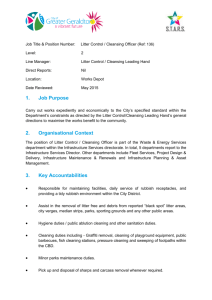Health and Safety Instructions for Community Litter Pick
advertisement
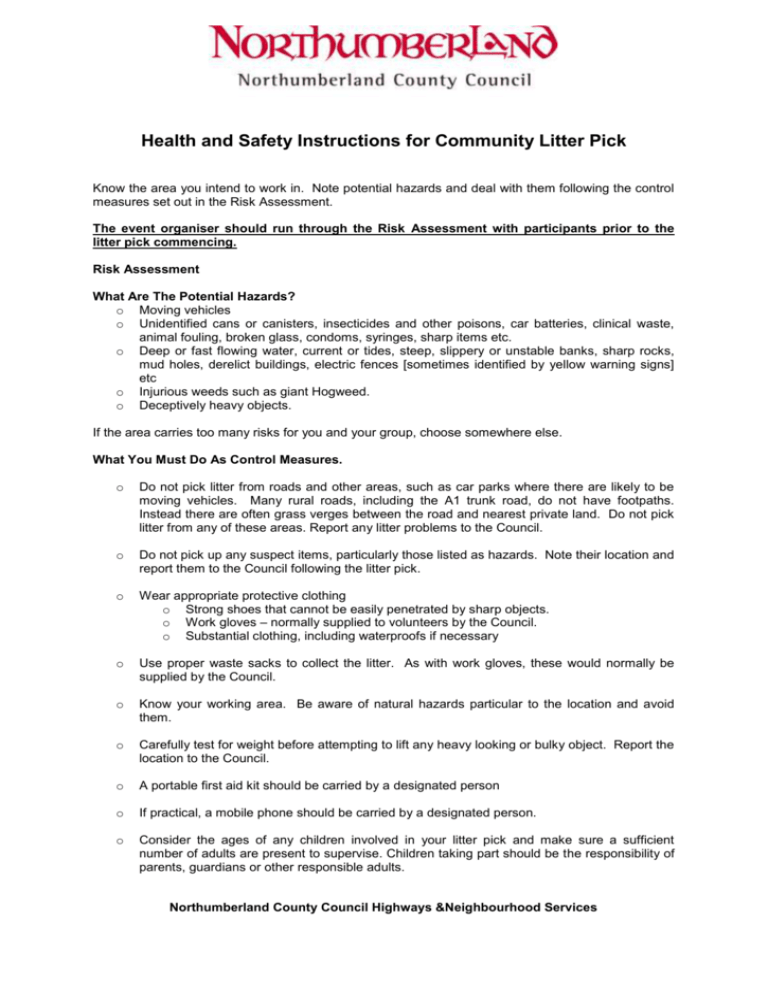
Health and Safety Instructions for Community Litter Pick Know the area you intend to work in. Note potential hazards and deal with them following the control measures set out in the Risk Assessment. The event organiser should run through the Risk Assessment with participants prior to the litter pick commencing. Risk Assessment What Are The Potential Hazards? o Moving vehicles o Unidentified cans or canisters, insecticides and other poisons, car batteries, clinical waste, animal fouling, broken glass, condoms, syringes, sharp items etc. o Deep or fast flowing water, current or tides, steep, slippery or unstable banks, sharp rocks, mud holes, derelict buildings, electric fences [sometimes identified by yellow warning signs] etc o Injurious weeds such as giant Hogweed. o Deceptively heavy objects. If the area carries too many risks for you and your group, choose somewhere else. What You Must Do As Control Measures. o Do not pick litter from roads and other areas, such as car parks where there are likely to be moving vehicles. Many rural roads, including the A1 trunk road, do not have footpaths. Instead there are often grass verges between the road and nearest private land. Do not pick litter from any of these areas. Report any litter problems to the Council. o Do not pick up any suspect items, particularly those listed as hazards. Note their location and report them to the Council following the litter pick. o Wear appropriate protective clothing o Strong shoes that cannot be easily penetrated by sharp objects. o Work gloves – normally supplied to volunteers by the Council. o Substantial clothing, including waterproofs if necessary o Use proper waste sacks to collect the litter. As with work gloves, these would normally be supplied by the Council. o Know your working area. Be aware of natural hazards particular to the location and avoid them. o Carefully test for weight before attempting to lift any heavy looking or bulky object. Report the location to the Council. o A portable first aid kit should be carried by a designated person o If practical, a mobile phone should be carried by a designated person. o Consider the ages of any children involved in your litter pick and make sure a sufficient number of adults are present to supervise. Children taking part should be the responsibility of parents, guardians or other responsible adults. Northumberland County Council Highways &Neighbourhood Services
